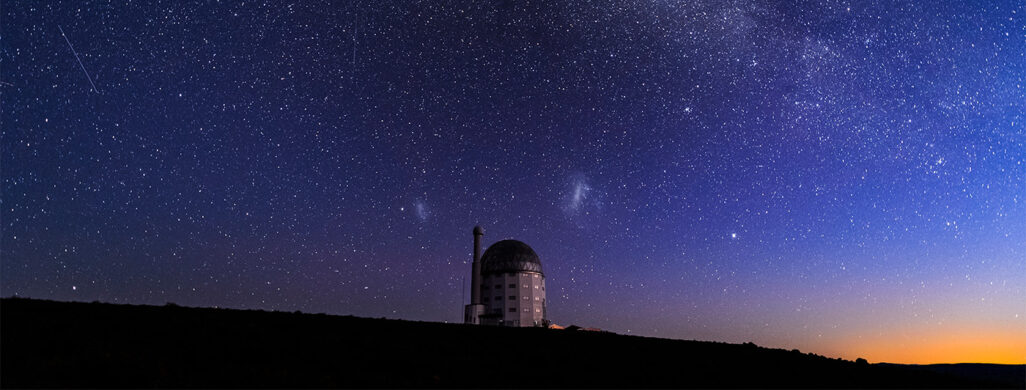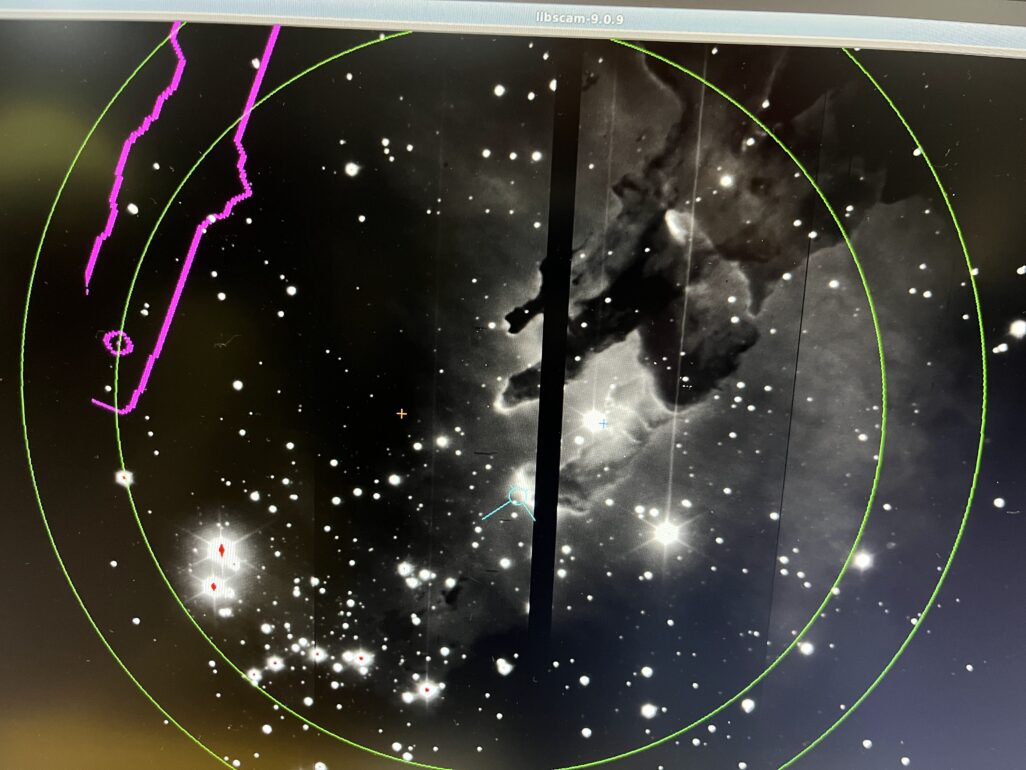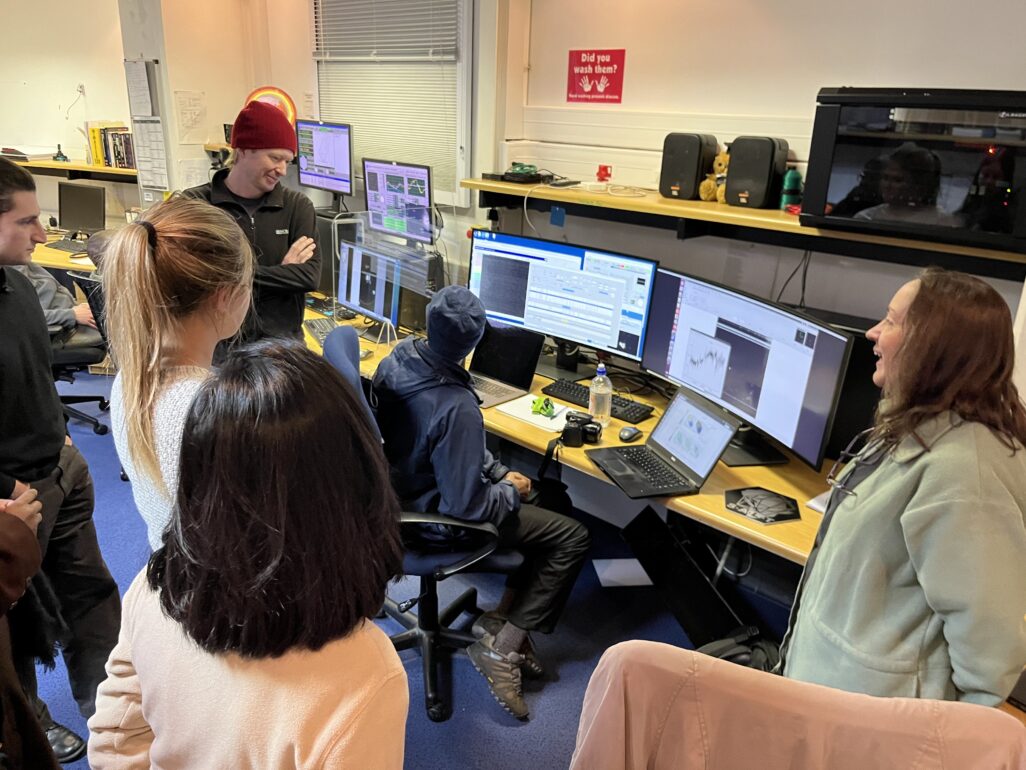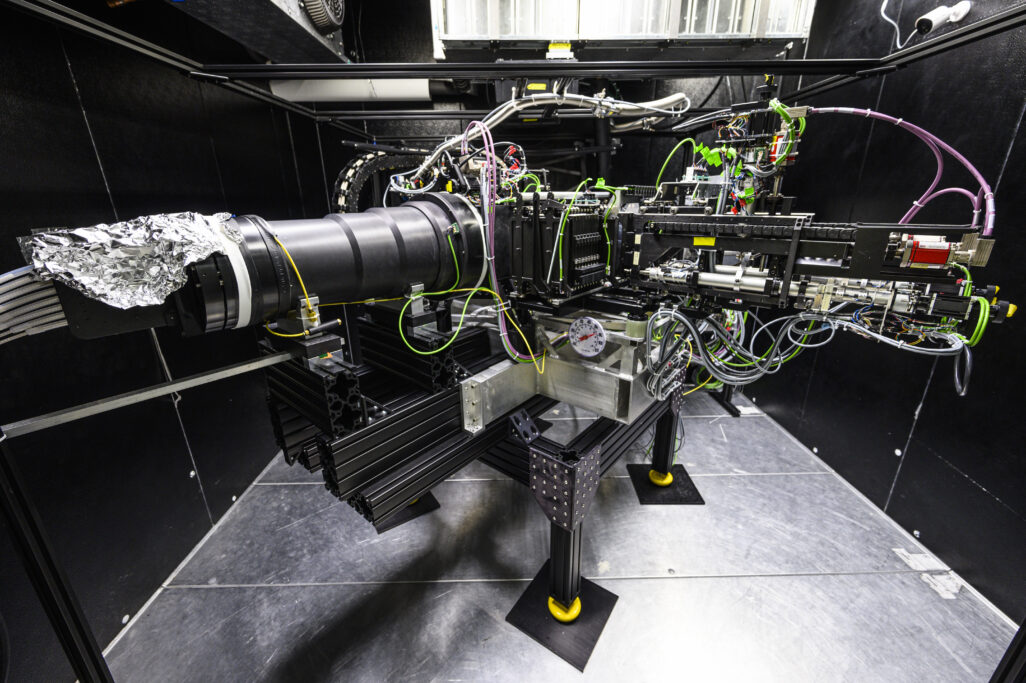SALT — Southern African Large Telescope sees first infrared images
On a remote South African plateau, the passing of day into night reveals a cosmos awaiting discovery. The rural village of Sutherland, located four hours away from the capital city Cape Town, offers some of the darkest skies in the country. For this reason, it is home to the Southern African Large Telescope — an 11-meter (36-foot) telescope designed to peer deep into the cosmos and study our universe.

In Summer of 2022, SALT achieved a milestone by observing its first celestial object in the infrared. The target was a familiar one, the Eagle Nebula — made famous by the Hubble Telescope’s imagery that revealed its unfathomable size and active stellar nursery. The nebula is located in the constellation Serpens and made for an ideal first target because of its intriguing structure and many star-forming regions.
“People came out of the woodwork for this momentous occasion. They had logged many long-hour days helping us prepare for this moment and weren’t going to miss the event, even though it meant staying even longer into the night,” says Marsha Wolf, senior scientist at the University of Wisconsin–Madison Department of Astronomy and principal investigator for the SALT Near-Infrared Washburn Astronomical Laboratories Spectrograph. “There were lots of high-fives going around the room.”

The SALT telescope is led by the South African Astronomical Observatory in partnership with more than 10 universities and observatories, including the UW–Madison Department of Astronomy and the Space Science and Engineering Center who helped design and build the NIRWALS.
The SALT uses an array of 91 hexagonal mirrors to collect cosmic light and focus it toward three detectors: the SALT Imaging and Acquisition Camera or SALTICAM, the Robert Stobie Spectrograph, and the NIRWALS. Each is sensitive to different wavelengths of light, including the visible and the near-infrared spectrum. Astronomers use both types of light to observe and study all aspects of celestial objects like stars, galaxies and nebulae.
Wolf’s research focuses on galaxy formation and evolution. By using both the infrared and visible light gathered by the telescope, she and her team are able to witness changes in the structure of galaxies over time. In particular, they study galaxies that have active supermassive black holes at their center, known as active galactic nuclei. When these black holes feed on nearby matter like gas and stars, much of the matter is ejected far away from the center at blistering speeds. The resulting shockwaves can be forceful enough to disrupt the formation of nearby stars within the galaxy. These violent interactions emit light in the visible and infrared frequencies that are captured by the SALT telescope detectors.

Credit: Lisa Crause
“Stars form through the gravitational collapse of gas, so one way to stop this process is to heat the gas enough so that thermal motions of its particles overpower gravity and prevent it from condensing into stars,” says Wolf. “One proposed feedback culprit is the supermassive black hole at the center of nearly every galaxy.”
The idea is that the hot gasses and matter that are not consumed by the black hole collide with other particles in the galaxy, causing those areas to heat up. This redistribution of energy could interrupt a nearby star’s formation and better match observations with computer simulated galaxy formations.
Wolf and her team will use the SALT to investigate hundreds of nearby galaxies to search for evidence of black hole disruptions and outflows of energy away from the center. According to Wolf, a large sample size is needed because each galaxy observed by the SALT provides only an instantaneous snapshot of a process that takes place over millions of years. Image by image, the team will be able to witness different phases of a galaxy’s evolution and the activity from its black hole.
“The near-infrared spectra from our new instrument will give information on shocks in the gas from active galactic nuclei outflows, past supernovae, and the very youngest stellar populations,” says Wolf. “Putting these data all together, this will paint a clearer picture of if and how the nuclei have regulated the star formation histories of galaxies.”
What is NIRWALS?
Telescopes have evolved significantly over the last century. While amateur astronomers and the public can enjoy seeing objects like the Moon or Saturn in our galactic backyard, modern telescopes reveal hidden objects located deep within our galaxy and beyond. Not only do they show us beautiful images of distant stars and planets, but they can tell us what they are made of, their age and how quickly they are moving away from us or toward us.
Observations in the infrared are responsible for this level of detail. Although invisible to the human eye, infrared detectors like the NIRWALS are sensitive enough to collect these data and reveal a wealth of knowledge about our universe.
The NIRWALS was designed by the UW–Madison Space Science and Engineering Center and the Department of Astronomy in partnership with the South African Astronomical Observatory.

“The NIRWALS allows us to compare the light signals from galaxies at large distances to galaxies nearby that have been observed at visible wavelengths. Because the universe is expanding the signals from distant galaxies get doppler-shifted into the near-infrared where we can observe them,” says Matthew Bershady, UW–Madison astronomy professor and lead on the NIRWALS fiber optic system. “It also can be `cloudy’ in space, particularly in star-forming galaxies where there is a lot of dust. The NIRWALS probes through more layers of dust to uncover the stars.”
The instrument consists of three primary components: the payload, the fiber-optic cables and the spectrometer. The payload is located 13 meters (42 feet) above the ground level where it collects the light from the mirrors and then transfers that information to a spectrometer beneath the telescope structure.
A 43-meter (141-foot) bundle of sensitive fiber-optic cables connect the payload to the spectrometer and transfer the light signals. The spectrometer below is chilled to a constant temperature of -40 C (-40 F) and allows the device to detect subtle temperature differences throughout a galaxy or nebula. Ultimately, the NIRWALS collates those signals and sends them to a computer system in the control room to convert that information into bar-code-like images known as spectra. These spectral images contain a wealth of information about a celestial target such as temperature and composition.
The NIRWALS will enable astronomers around the world to identify key features of a galaxy like the nucleus around the active galactic nuclei, the surrounding stellar disk and any potential outflows of gas both in and beyond the galaxy.
SSEC scientists and engineers provided end-to-end development support for the NIRWALS, which began conceptually in 2008. They contributed detailed mechanical design of power, control and thermal systems, thermal analysis and project management. Final assembly began in Summer 2022 ending with the NIRWALS’ six-week journey from Madison, Wisconsin to South Africa via trucks, ships and aircraft.
“SALT has a very bright future and this instrument is part of it,” says Bershady. “For us, we could not have done it without SSEC. Their project management and engineering has allowed the UW–Madison Astronomy Department to successfully deliver and realize the intellectual capital that went into building the instrument.”
This work is supported by the SALT Foundation, NSF, UW–Madison, WARF and SSEC.
Read more about the Southern African Large Telescope: https://origins.wisc.edu/
